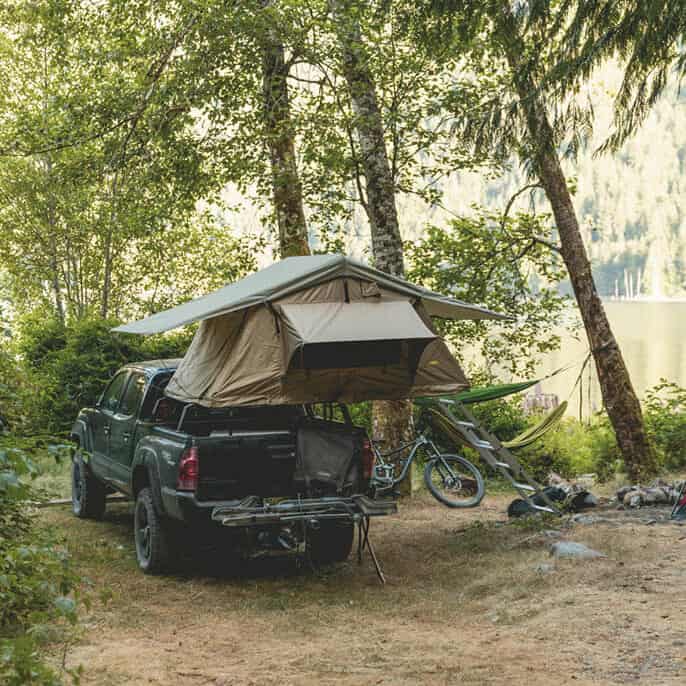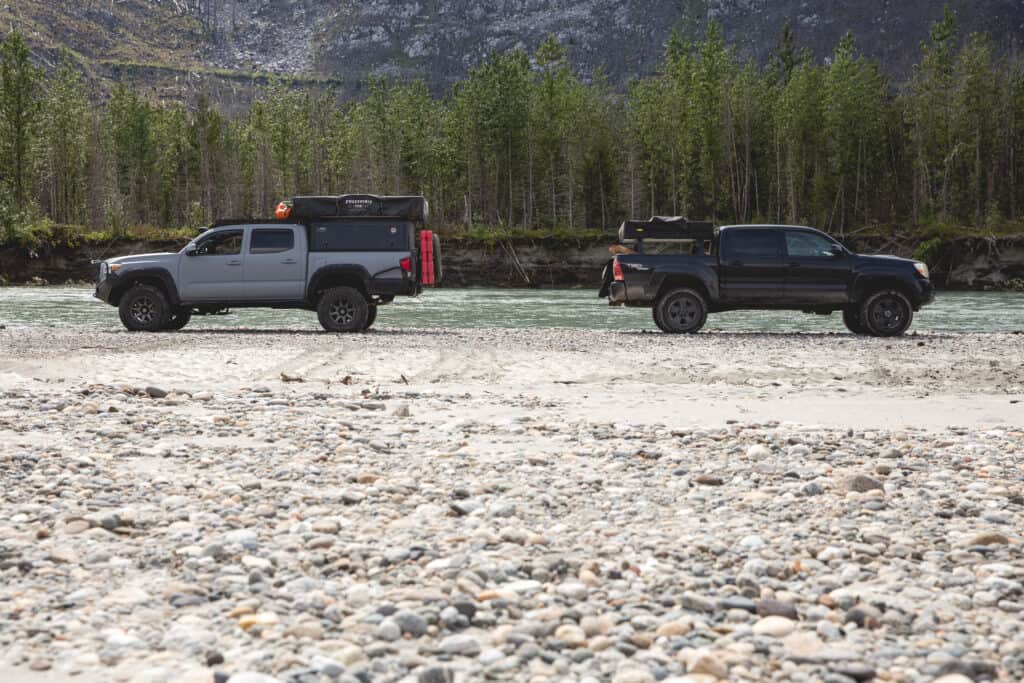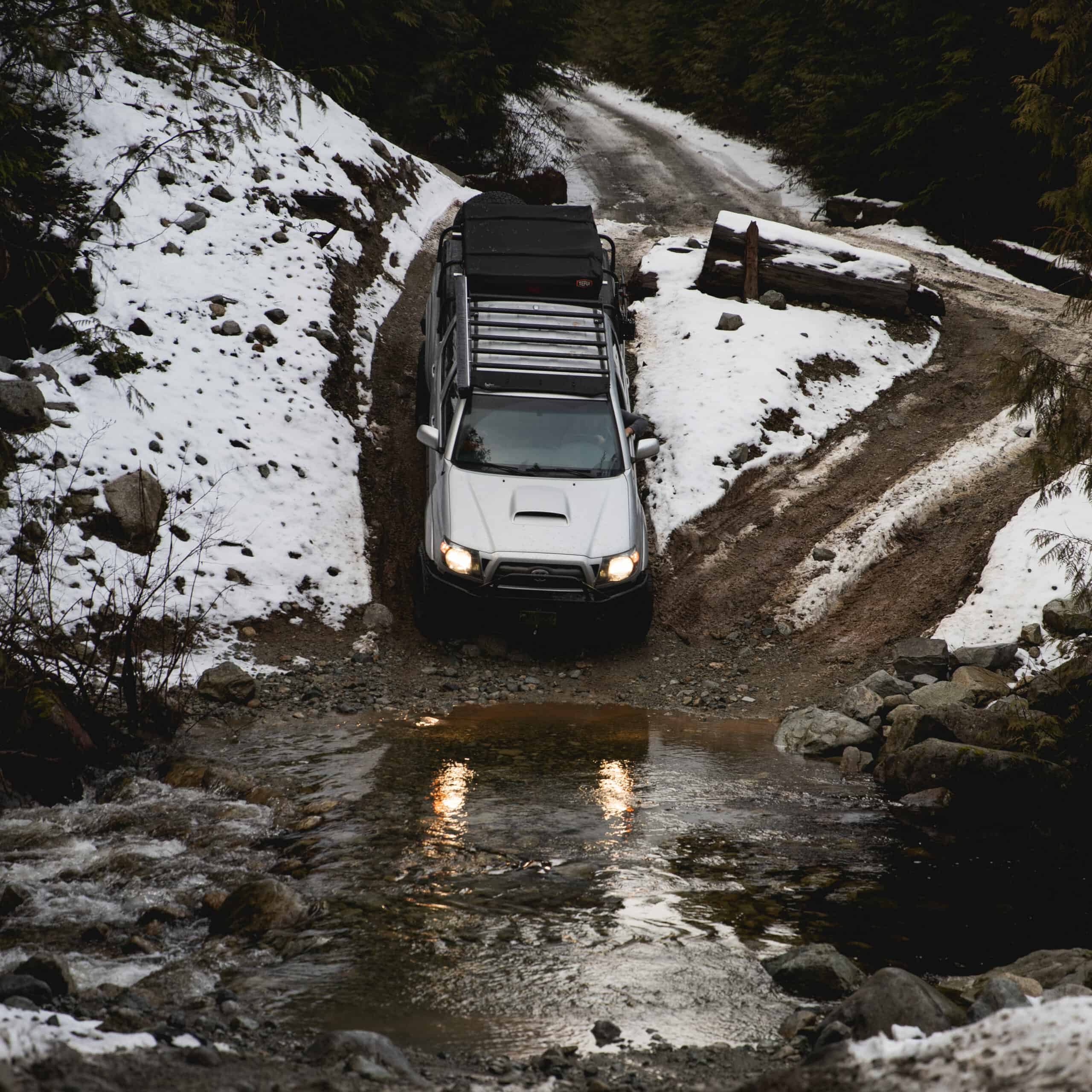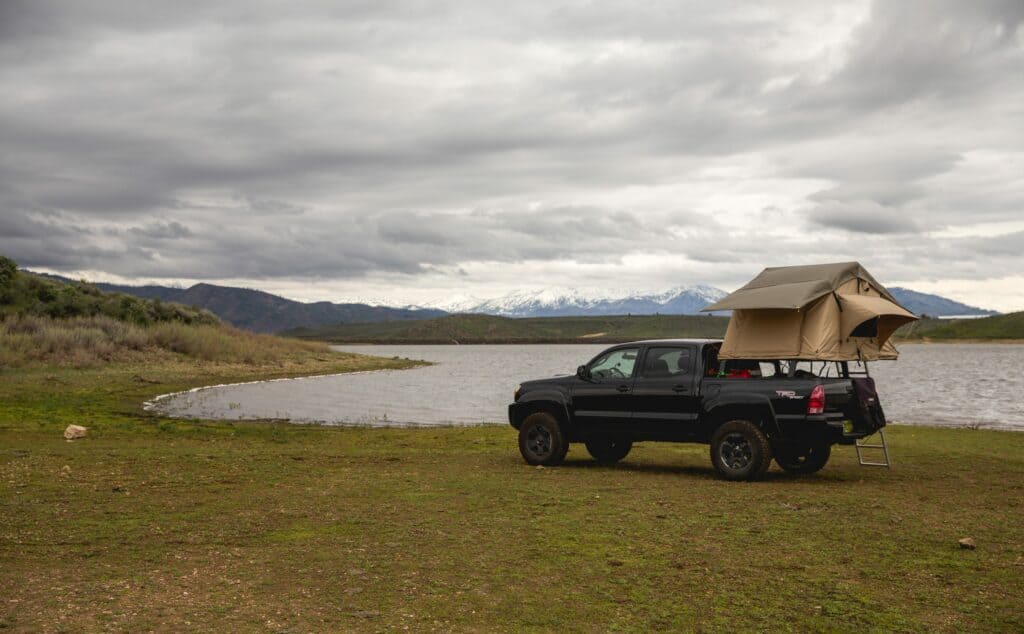Rooftop tents (RTT) are all the rage now when it comes to offroad camping and Overlanding. They are convenient and comfortable. From built-out Jeep Gladiators to your neighbor’s Subaru Crosstrek, they are on every kind of vehicle. Are they worth all the hype though?
In my experience over the last decade of camping, rooftop tents are definitely worth the investment. They are easy to use and comfortable. When camping these are two important features.
In this article, we will dive into both the strong and weak points of rooftop tents and help you decide if one is right for you!

What Is The Advantage Of A Rooftop Tent?
The main advantage of a rooftop tent is the fact that it is on your vehicle and ready for use at all times. This means that no matter how last minute your camping trip is, you know that at a minimum you will have a place to sleep. I don’t know if there is any worse feeling than arriving at camp and then realizing you forgot your tent.
A rooftop tent also has a mattress included inside it. Again, this means you have one less thing to pack, and one less thing to forget. Another huge perk of the mattress inside an RTT is that it will never deflate in the middle of the night!
Don’t forget vehicle storage as well. Having your tent mounted on top of your vehicle also means that there is more storage inside for the rest of your gear. If you have a pickup truck, you will need either a canopy or a special rooftop tent rack. Quite often the racks have special mounting points on the sides of them, which again helps free up space and make things like your recovery gear really easy to access.
How Much Do Rooftop Tents Affect Fuel Economy?
On average, a rooftop tent will affect your fuel economy by about 17%. There are a few key factors at play here though.
– Where Is The Tent Mounted?
This is most likely the largest determining factor in how your fuel economy is affected. If your tent is mounted on your roof, it will have a far greater impact on your MPG than if it is mounted below the roofline, just above your truck bed.

– What Shape Is It?
Rooftop tents for the most part are fairly similar in shape. Some square, some more rectangular. However, there can be a large difference in the thickness of the tent’s body when it is closed down. Most softshell tents are about twelve inches thick when closed, a bit more if the ladder remains mounted to it.
Hardshell tents have a larger range in thickness. From the 6″ of the Go Fast Camper, to the almost 13″ of the iKamper.
– How Much Does It Weigh?
When your vehicle is unloaded and you are daily driving, the extra weight of your rooftop tent really shouldn’t make a difference in your fuel economy. However, when you are fully packed for a trip, any pounds you are able to shred can affect your mpg positively.
A Smittybilt Overlander tent weighs 139 lbs, while a Superlite by Go Fast Campers comes in at amazing 80 lbs.
Can You Four-Wheel Drive With A Rooftop Tent?
You can certainly go 4x4ing with a rooftop tent! It is recommended that if you are spending extended periods of time on bumpy roads, you check your tent’s mounting hardware periodically. On occasion, the hardware can come loose, and you don’t want to lose your tent.
With that said, RTTs are fantastic for off-roading. They especially shine if you don’t finish your track and don’t make it to camp in time. No matter what the ground is like, you can pop up your tent on the side of the trail and have a solid night’s sleep.
One thing to keep in mind when 4x4ing with an RTT is that depending on where it is mounted, your vehicle could be substantially more top-heavy. A tent that is mounted on the bed of a truck with the top of the tent being in line with the top of the roofline, won’t make a huge difference. A tent mounted on top of an SUV though can potentially make a large difference.

Are Rooftop Tents Safer?
Rooftop tents are safer in the fact that you have high ground. Are they 100% safer than a ground tent though? Absolutely not. If a bear is sniffing around your tent at night though, I would much prefer to be above it, than at its level. The same logic goes for camping in an area where you could potentially have another person snooping around your camp at night. I would rather be above that person, rather than laying on the ground.
Remember though, the easiest way to be safe at camp is to keep all food and cooking supplies away from your sleeping area.
Keeping a canister of bear spray in your tent is also recommended. Be sure to keep the safety on though. Accidentally triggering it at night and filling your tent with spicy air, would not be fun!
Are Rooftop Tents Easy To Setup?
Rooftop tents are extremely easy to set up. Depending on where they are mounted will affect the ease of opening them, however. For example with my Tacoma, my tent is mounted on a custom bed rack. I am able to fully unlatch it while standing on the ground but to actually open the tent I flip down my tailgate and stand on it.
Once I have opened my tent I have the option of putting 8 rods in to open up the rainfly and windows. This takes less than a minute and is completely optional, though recommended.
I have a softshell tent. For hardshell tents, the setup time is even quicker. Most involve undoing 4 clasps and simply pushing up on one or two sides. The tent will do the rest of the work and open itself up! Like my tent, someone hardshell options also include rods for windows, however, it is more rare.

What Are The Downsides Of A Rooftop Tent?
There are a few downsides to a rooftop tent, but the main inconvenience is having to pack up before you move. This is of course the case with a regular tent as well. However, a regular ground tent allows you to have a home base if you are in an area for an extended period.
Having a rooftop tent means that for each day you want to go exploring in the area where you are camped, you have to take down and set up your tent. Again using my tent as an example, I am able to leave my blankets and sleeping bags in the tent when I close it, so this is not a huge hassle.
With most tents that are on the market though, you have to take out all your sleeping accessories first. This makes life a little less convenient if you are having to do this multiple times on a trip when your home base isn’t moving.
For an in-depth comparison of a rooftop tent and a ground tent, check out this article here. I go into a thorough list of the pros and cons of both styles of tents.
Final Thoughts: Are Rooftop Tents Worth The Hype?
If you are someone who gets out camping on a semi-regular basis, investing in a rooftop tent is 100% worth it. They are quick and convenient to set up and add to the comfort of your camping or road trip.
I recommend shopping around to find the right tent for your needs. RTTs have a wide range of pricing from $1,000 to over $6,000. Finding the tent that is right for you is crucial to avoid overspending.
As previously mentioned, if you would like an in-depth look at both the pros and cons of a rooftop tent as well as a classic ground tent, click here.